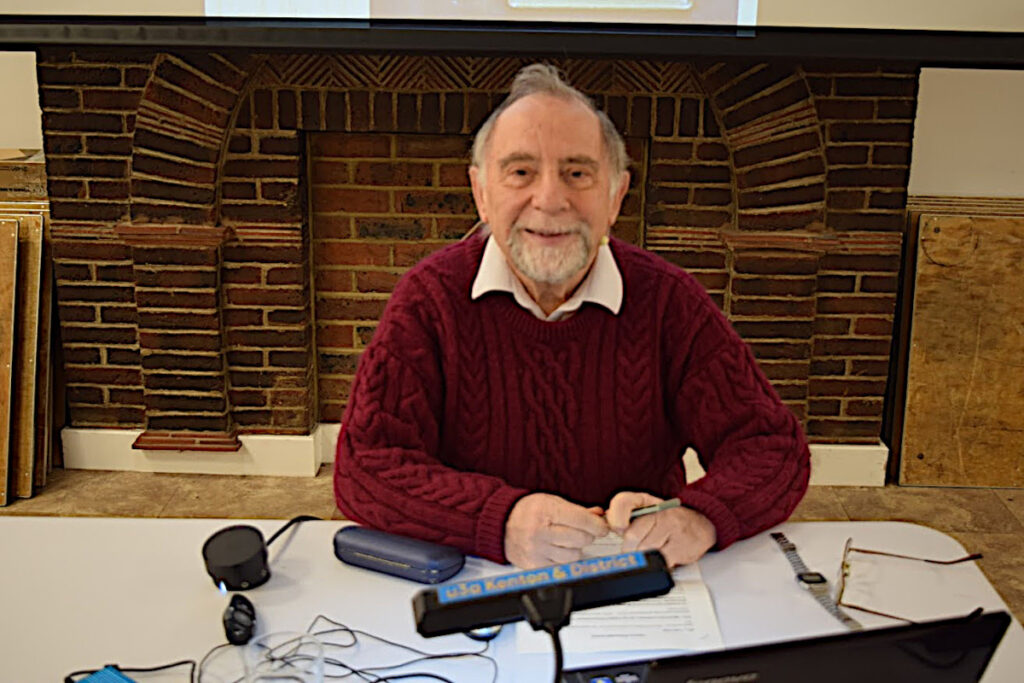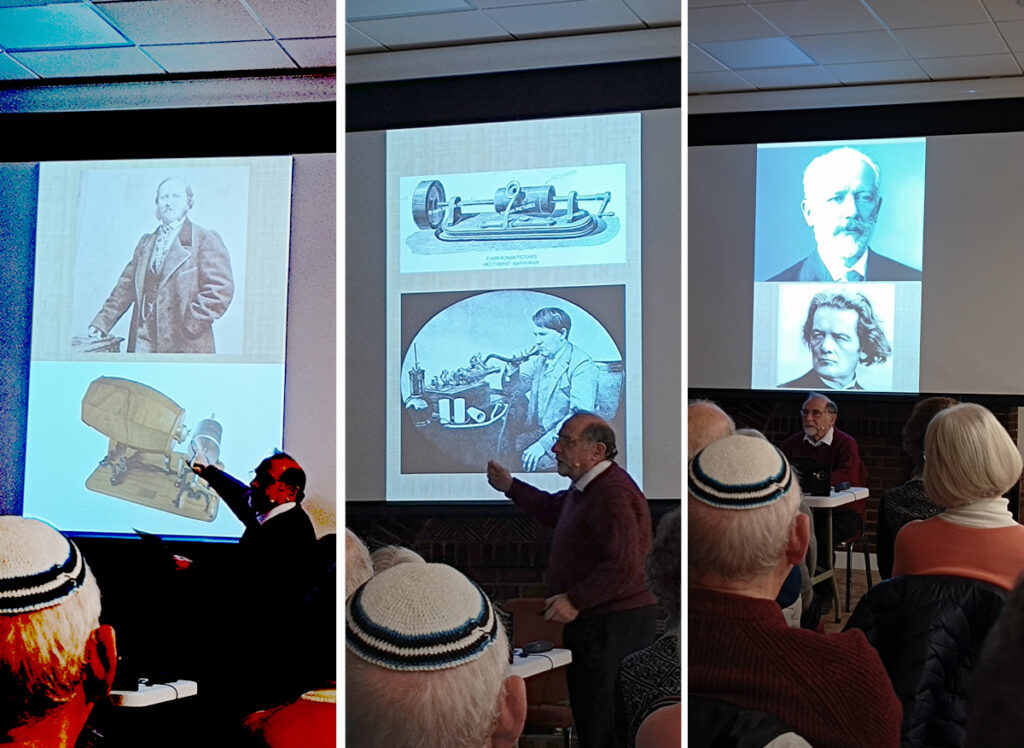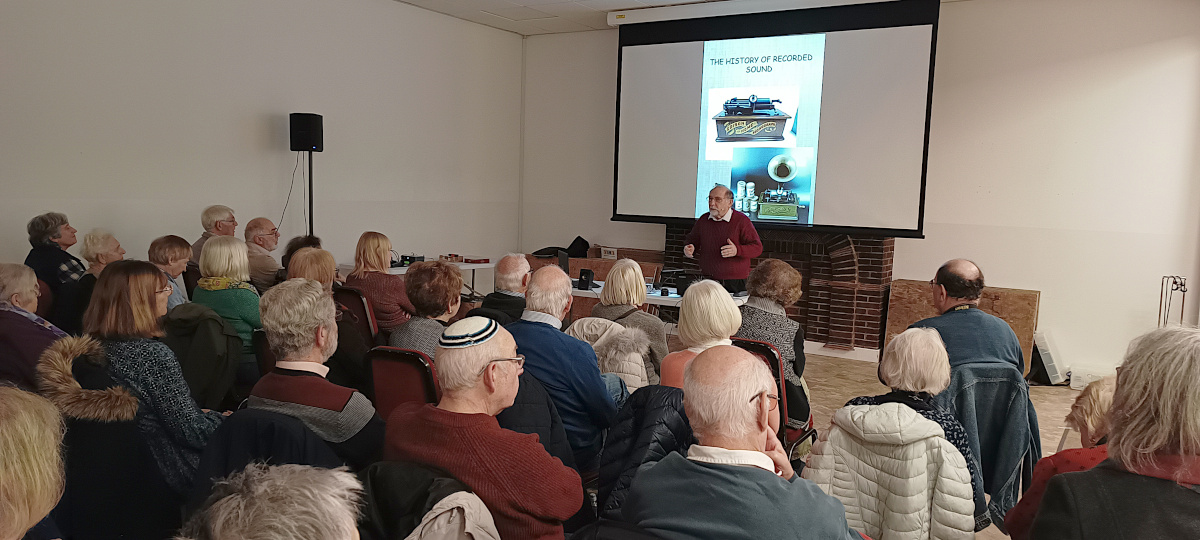Our Monthly Meeting on Wednesday 24 January 2024 featured a familiar face – Herbie Goldberg – as our speaker. His subject was The History of Recorded Sound.
Whilst many people believe that the first recorded sound was Thomas Edison reciting a nursery rhyme about a girl and her little lamb, Herbie was able to correct the ‘record’ and lead us to Édouard-Léon Scott de Martinville, a French printer living in Brittany, who beat Thomas Edison to recording sound by some 17 years, but was not able to play back his recording. His first device was the phonautograph, and was more of interest to scientists studying the nature of sound than domestic users.

We then moved on to Thomas Edison, who foresaw the extended market place that sound recording could fill, and filed many patents in the USA for his sound recording and playback devices. Early recordings were made on wax cylinders, later moving to more robust and durable cylinder surfaces. The introduction of clockwork power to operate recording and playback was also a significant development as it meant that the playback speed no longer relied on a person turning a cranking handle, and so pitch could at last be accurately reproduced.
Edison first saw his recording device being used in telegraphy, providing a means of replaying morse code messages so as to improve the accuracy of the interpretation. The move from cylinders to flat disks, as proposed by Emile Berliner in 1887 and 1888 paved the way for mass production of records that offered longer recording times than the cylinders.

Herbie’s talk was full of recorded examples, including the voices of Thomas Edison, Sir Arthur Sullivan, William Gladstone, Otto von Bismark, Peter Schram (the first recorded opera singer), Johannes Brahms, Florence Nightingale, Pyotr Tchaikovsky, Tsar Nicholas II, and many more. All of these recordings had been made without any electrical equipment although some had been improved in modern times to improve their audibility. This was a fascinating talk, and we look forward to Part 2 which will cover recordings made with electrical amplification.

